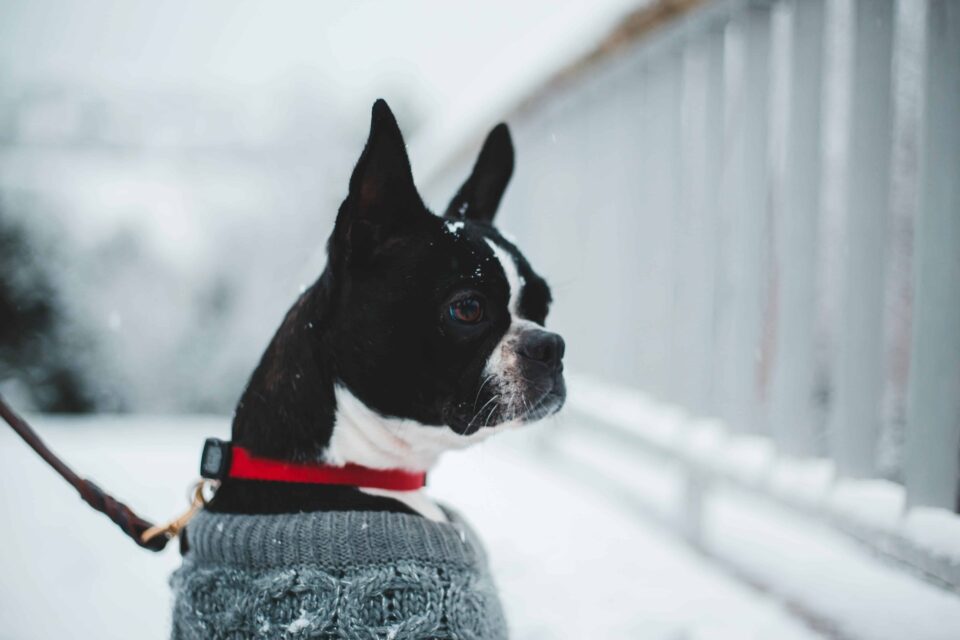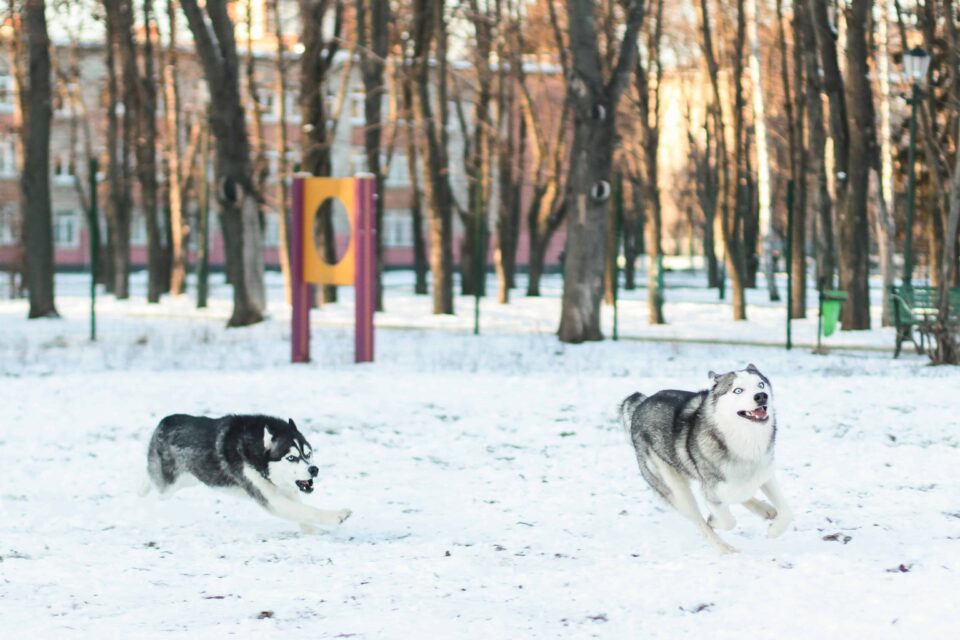When is it Too Cold to Walk Your Dog?
Ever wonder when it’s just too chilly to take your dog out for a walk? As the temperature plummets, it’s a question many dog owners face. You want to keep your furry pal safe and warm, but exercise is important too. The trick is knowing how cold is too cold for your specific dog. Factors like breed, age, and health all play a role. Let’s dive into what you need to know to keep your dog comfy and happy during those frosty months.
Key Takeaways
- Different breeds have varying cold tolerances. Huskies can handle colds better than Chihuahuas.
- Pay attention to your dog’s behavior. Shivering or reluctance to walk may mean they’re too cold.
- Use doggy coats and booties for extra warmth during winter walks.
- Shorten walks when temps drop below freezing. Safety first!
- Indoor play can be a great alternative when it’s too cold outside.
Understanding Your Dog’s Cold Tolerance
Factors Affecting Cold Tolerance
Dogs’ cold weather handling varies based on breed, size, age, and health. Siberian Huskies and Newfoundlands have thick coats, while Greyhounds and Chihuahuas require extra protection.
- Coat Type: Dogs with thick fur are better insulated against the cold.
- Size and Weight: Smaller dogs lose heat faster than larger ones.
- Health and Age: Puppies, older dogs, and those with health issues are more sensitive to colds.
Breed-Specific Cold Adaptations
Some breeds are practically built for winter. Huskies and Malamutes, for example, have not only thick coats but also a high tolerance for cold due to their origins in frigid climates. Breeds like these can often manage lower temperatures without much fuss. However, if you own a breed that isn’t as cold-friendly, consider investing in some winter gear for them.
Age and Health Considerations
Just like humans, dogs’ ability to handle colds can diminish with age or health issues. Puppies and senior dogs have a harder time regulating their body temperature. If your dog is unwell, their cold tolerance might also be reduced. It’s crucial to keep these factors in mind when planning outdoor activities during the winter.
Related: How to Recognize Signs of Pain in Dogs
Recognizing Signs of Cold Stress in Dogs
Common Symptoms of Hypothermia
When your dog’s body temperature drops below 98°F, it’s a signal that they’re experiencing hypothermia. Be alert for signs like:
- Lethargy: Your dog might seem unusually tired or sluggish.
- Pale Gums: Check your dog’s gums; they should be a healthy pink, not pale.
- Shivering: This is the body’s natural response to generate heat.
- Reluctance to Move: If your dog seems unwilling to walk or play, it might be too cold.
- Stiffness: Walking stiffly or moving slowly can indicate discomfort from the cold.
If you notice these symptoms, it’s crucial to bring your dog indoors immediately and wrap them in warm blankets. Seek veterinary help if their condition doesn’t improve.
Behavioral Changes to Watch For
Dogs often communicate discomfort through their behavior. Some signs that your dog might be too cold include:
- Whining or barking: This could be their way of telling you they’re uncomfortable.
- Seeking Shelter: If your dog is trying to hide or find a warm spot, they might be feeling the chill.
- Lifting Paws: Cold ground can be painful, and lifting paws is a common response to discomfort.
When to Seek Veterinary Help
Knowing when to consult a vet can make a big difference in your dog’s health during cold weather. If your dog shows persistent signs of cold stress, such as ongoing shivering, lethargy, or pale gums, it’s time to call the vet. Quick action can prevent more severe health issues like frostbite or hypothermia.
Remember, your dog’s well-being is in your hands. Being observant and responsive to their needs is key to keeping them safe during chilly days.
Keep an eye out for shaking or shivering, as it can be a sign of distress. Don’t ignore these signals; your pup relies on you to keep them warm and safe.
Related: Treating Hot Spots on Dogs: Effective Solutions

Preparing for Winter Walks with Your Dog
Essential Winter Gear for Dogs
To prepare your dog for cold walks, wear a warm coat or sweater, waterproof booties, and reflective leashes or collar lights. These items provide insulation, protect paws from ice, salt, and de-icers, and ensure visibility during winter days.
Tips for Safe Cold Weather Walks
Walking your dog in the winter can be a fun adventure, but safety should always come first. Here are some tips to keep in mind:
- Keep walks short when temperatures are freezing. Aim for exercise during the warmest parts of the day and stick to brief relief walks in the morning and evening.
- Always use a leash to prevent your dog from wandering onto dangerous surfaces like thin ice.
- After your walk, wipe your dog’s paws with a warm washcloth to remove any salt or chemicals they might have picked up.
Indoor Alternatives for Exercise
Sometimes, it’s just too cold to venture outside. But that doesn’t mean your dog has to miss out on exercise. Here are some indoor activities to keep them active:
- Interactive toys like treat-dispensing puzzles can provide mental stimulation.
- Set up a mini obstacle course using furniture and toys to create a fun indoor agility course.
- Play fetch in a safe, open area of your home.
Winter walks can be a joy, but when the weather’s just too harsh, remember that keeping your dog active indoors is a great alternative. Your furry friend will appreciate the effort to keep them entertained and healthy, even when it’s freezing outside.
For more winter dog tips, make sure your pet remains safe, comfortable, and healthy during cold-weather outings. Daily walks are essential for dogs, even in winter.
The Science Behind Cold Weather and Dogs
How Cold Weather Affects Dogs
Cold weather can be tough on dogs, just like it is on humans. Dogs lose heat faster than they produce it, which can lead to a drop in body temperature. This is especially true for dogs with thin coats or those that are small in size. The cold can sap their energy, making them lethargic and less playful.
The Role of Dog Physiology in Cold Tolerance
Dogs’ cold tolerance varies based on their physiology, including their coat type, body size, and fat content. Siberian Huskies and Newfoundlands have thick coats, while Greyhounds have thinner coats.
Understanding Wind Chill and Its Impact
Wind chill is a significant factor when considering a dog’s comfort in cold weather. A strong wind can cut through a dog’s coat, reducing its insulating ability and making it feel colder than the actual air temperature. It’s important to account for wind chill when deciding whether it’s too cold for a walk.
Practical Tips for Walking Your Dog in Cold Weather
Choosing the Right Time for Walks
- Plan walks during warmest hours (10 a.m.–3 p.m.) for better daylight visibility.
- Opt for shorter, frequent walks over long ones.
- Choose routes avoiding icy patches and salted sidewalks for paw protection.
Protecting Your Dog’s Paws
Cold weather can be harsh on your dog’s paws, especially with ice and salt on the sidewalks. Consider using dog booties or paw balm to provide insulation and protection. After each walk, wipe your dog’s paws with a warm cloth to remove any salt or chemicals. Trim the hair between their paw pads to prevent ice buildup.
Monitoring Your Dog’s Comfort Level
- Monitor dogs for signs of coldness: shivering, whining, or lifting paws off the ground.
- Keep dogs on a leash to avoid dangerous icy surfaces.
- If the dog shows discomfort, consider indoor activities.
- Winter walks require extra care for safety and comfort.
- Prioritize the dog’s well-being and adjust routines as needed.
Related: Why Is Your Dog Shedding So Much?
When to Avoid Walking Your Dog in Cold Weather
Temperature Guidelines for Dog Walks
It can be challenging to determine when it’s too cold to walk your dog, but here’s a straightforward guideline: if it’s too cold for you, it’s probably too cold for your dog as well. Generally, temperatures below 32°F can be uncomfortable for many dogs, especially small breeds and those with short coats. When the temperature drops below 20°F, you should seriously consider keeping your furry friend indoors, as prolonged exposure can lead to severe cold-related health issues.
Risks of Prolonged Exposure to Cold
Cold weather exposure can cause severe health issues in dogs, including hypothermia and frostbite, requiring gradual indoor warming and immediate attention for symptoms.
- Hypothermia Symptoms:
- Frostbite Indicators:
Alternatives to Outdoor Walks
When it’s too cold outside, there are plenty of indoor activities to keep your dog active and entertained. Consider these alternatives:
- Indoor Fetch: Use a hallway or spacious room to play fetch with a soft toy.
- Puzzle Toys: Engage your dog’s mind with interactive toys that challenge them to find treats.
- Hide and Seek: Hide treats around the house and encourage your dog to find them.
Keeping Your Dog Safe and Warm in Winter
Importance of Dog Clothing
Wearing a well-fitted dog jacket is essential for cold weather, covering the chest and back without restricting movement. Choose options like Carhartt® Chore Insulated Dog Coat or Frisco® Quilted Water-Resistant Jacket for protection.
Creating a Warm Environment at Home
Keeping your dog cozy indoors is just as important. Ensure their bed is away from drafts and consider adding a blanket for extra warmth. A heated pet bed can significantly improve the temperature in your chilly home. Also, keep their skin moisturized to prevent dryness. Gou Gou Pets’ DermaSkin Ointment is perfect for soothing any skin irritation your dog might experience due to indoor heating.
Recognizing and Treating Frostbite
Frostbite in dogs can be easily detected by prolonged outdoor exposure. Signs include pale, hard skin feeling cold. If suspected, warm affected areas with lukewarm water. Consult a vet if symptoms persist. Preventive measures include short walks during extreme cold spells. Keep your pet safe and cozy during the winter.
Conclusion
Knowing your dog’s limits is crucial when walking them in cold weather. Monitor your dog’s behavior and prepare them with warm coats, short walks, and indoor playtime. Enjoy the winter wonderland together, keeping your tails wagging.
~Veterinarian Recommended